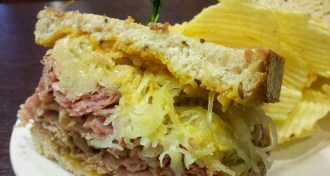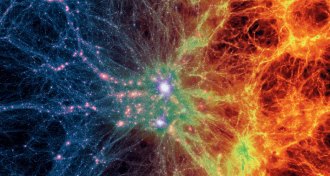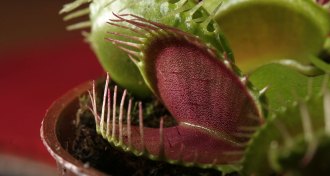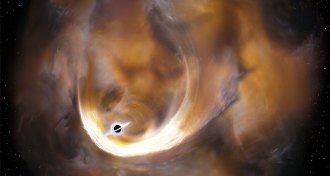All Stories
-
 Tech
TechOnline reading behavior predicts stock movements
People's current web surfing patterns predict future stock movements. The discovery could help authorities to stabilize financial markets.
-
 Quantum Physics
Quantum PhysicsQuantum histories get all tangled up
Multiple versions of history may be quantum entangled just like particles, a new experiment suggests.
By Andrew Grant -
 Environment
EnvironmentConverted milk proteins clean pollution, strike gold
A new membrane uses sticky amyloid proteins to trap contaminants in water.
-
 Health & Medicine
Health & MedicineMonkeys with human gene show signs of autism
Genetically altered monkeys may help scientists understand autism.
-
 Psychology
PsychologyThere’s a sour side to serotonin
Serotonin has a sour side. The chemical messenger helps mice to taste sour, a new study shows.
-
 Cosmology
Cosmology‘The Cosmic Web’ weaves tale of universe’s architecture
A new book chronicles the quest over the last century to understand how the universe is pieced together and how it came to be this way.
-
 Plants
PlantsTo catch a meal, a Venus flytrap counts to five
It takes two taps to trigger a Venus flytrap to close. Another three, a new study finds, are needed to turn on genes for producing enzymes.
-
 Earth
EarthEarth’s inner secrets divulged in ‘Into the Heart of Our World’
A scientific journey to the center of the Earth includes just as much excitement and mystery as Jules Verne’s classic novel, a new book demonstrates.
-
 Health & Medicine
Health & MedicineRapid spread of Zika virus in the Americas raises alarm
After blazing through Brazil, a mosquito-borne virus called Zika, which may cause birth defects, is now poised to jump to the United States.
By Meghan Rosen -
 Animals
AnimalsTegu lizards warm up for mating season
The heat is on in tegu lizards during mating season, study suggests.
-
 Animals
AnimalsTegu lizards warm up for mating
Despite their cold-blooded reputation, tegu lizards boost their body heat while on the prowl for a mate, biologists report online January 22 in Science Advances.
-
 Astronomy
AstronomyMiddleweight black hole suspected near Milky Way’s center
A gas cloud in the center of the galaxy might be temporarily hosting the second most massive black hole known in the Milky Way.